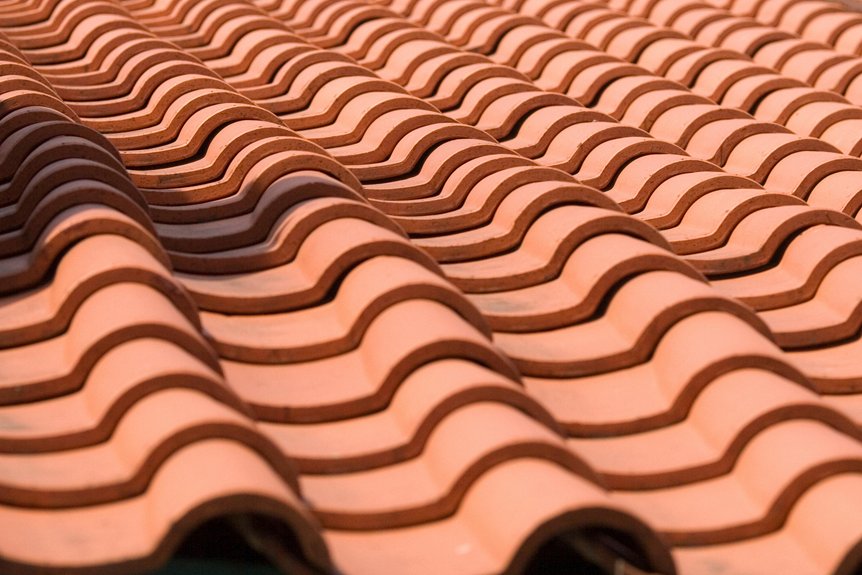Pitched roof insulation enhances energy efficiency by minimising heat loss and complying with building regulations. Commonly used materials include mineral wool, fibreglass, and rigid foam boards, with installation options available both between rafters and above them. Various methods, such as warm or cold roof systems, cater to different requirements. Effective insulation not only increases comfort but also reduces energy costs.
Combining different types of insulation can significantly enhance overall performance. Understanding these options enables homeowners to make informed choices, ultimately leading to improved home comfort and efficiency.
Types of Insulation Materials and Their Applications
When selecting insulation for pitched roofs, it’s essential to comprehend the various types of materials available and their typical applications.
Mineral wool, also known as rock wool, is a favoured choice due to its remarkable thermal and acoustic properties. Its thickness is often recommended to provide excellent fire resistance and minimise water absorption, thereby reducing the risk of mould. This dense and heavy material is usually available in rolls or batts, allowing it to fit seamlessly between rafters in both new constructions and renovations. Mineral wool also has excellent soundproofing qualities, making it particularly suitable for homes in noisy areas.
Fibreglass insulation is another popular option, recognised for its cost-effectiveness and wide availability. It comes in batts or rolls that are designed to suit standard rafter spaces. While it’s non-combustible, care must be taken during installation as it can cause irritation. Fibreglass requires a similar thickness to mineral wool to achieve equivalent insulation standards.
Both mineral wool and fibreglass insulation are prevalent choices because they effectively balance performance and affordability, contributing to a warm and inviting home environment.
Methods and Construction Types for Effective Insulation
Different methods of insulating pitched roofs are selected based on the roof’s structure and specific performance objectives.
One common approach is to place insulation between rafters, which involves fitting batts or boards snugly into the gaps. This method may require precise cutting and adequate ventilation to prevent moisture build-up.
Another option is to install rigid insulation above the rafters, creating a warm roof that minimises thermal bridging and keeps the rafters dry. Insulation can also be positioned beneath the rafters, enhancing insulation in existing spaces or allowing for various interior finishes.
Combining multiple layers, such as insulation between and over rafters, can significantly improve overall performance and reduce heat loss.
In loft areas, insulating at the floor level effectively separates heated living spaces from unused attics.
Each of these methods ensures energy efficiency while accommodating a variety of roof types and structures, making them suitable for a wide range of British homes.
Additional sentence: Proper installation techniques are crucial to maximize insulation effectiveness and avoid common issues like cold bridges or moisture problems, which can compromise the insulation’s performance. [Proper installation techniques
Enhancing Thermal Performance and Meeting Regulatory Standards
Achieving high thermal performance in pitched roof insulation is crucial for complying with UK building regulations and enhancing energy efficiency. Insulation must attain specific U-value targets, with warm roofs requiring a U-value of 0.18 W/m²K and cold roofs needing 0.13 W/m²K. Many modern insulation materials such as PIR and phenolic boards offer very low thermal conductivity, enabling the use of thinner layers while still meeting these standards. Hybrid insulation configurations, which combine layers placed above and between rafters, can exceed regulatory requirements. Products designed to minimise heat loss and thermal bridging are essential for compliance with EN and Agrément standards. Rigid boards featuring high compressive strength and moisture resistance guarantee enduring performance. Adhering to Part L regulations involves thorough testing and certification, along with the application of appropriate insulation techniques to optimise energy efficiency and safety in roofing systems.
Cost, Sustainability, and Practical Considerations
Cost, sustainability, and practical considerations are crucial factors when selecting insulation for pitched roofs. The material costs can vary significantly based on the type chosen, such as fibreglass, blown-in insulation, or reflective foil. Installation expenses also differ, with full installations generally costing a considerable amount, influenced by the roof’s size, pitch steepness, and overall complexity. Roof size is a key element that influences the total cost, as larger roofs require more material and labor. Sustainability plays a vital role in the decision-making process. Homeowners should aim to select materials with high thermal resistance (R-values) and consider environmentally friendly options, including recycled fibres or natural insulations. Proper ventilation and correct installation are essential to ensure long-term durability and energy efficiency. While the initial investment in insulation may be higher, it often leads to substantial savings through reduced energy bills. This makes it a worthwhile consideration for homeowners who prioritise comfort and environmental responsibility.
Conclusion
Choosing the right insulation for a pitched roof is essential and depends on various factors such as the materials used, installation methods, and regulatory standards in the UK.
Proper insulation enhances energy efficiency, reduces heating costs, and contributes to sustainability objectives. When selecting insulation options, it is vital to consider both practicality and budget to ensure effective thermal performance.
By familiarising yourself with the different insulation materials and construction techniques, homeowners can make informed choices that not only improve comfort but also comply with necessary building regulations.
Well-selected insulation offers long-lasting advantages for both the environment and the value of your property, making it a worthwhile investment.

